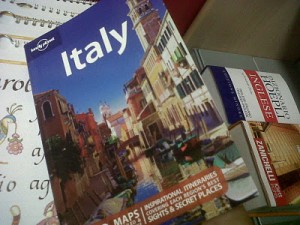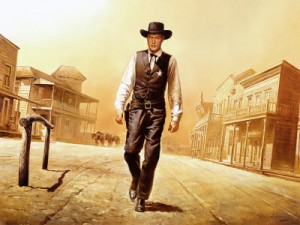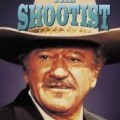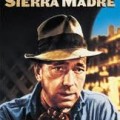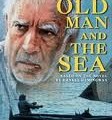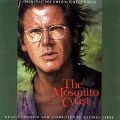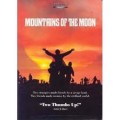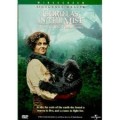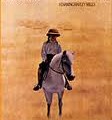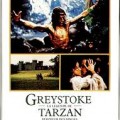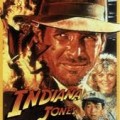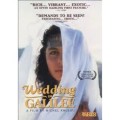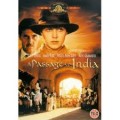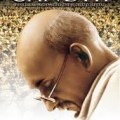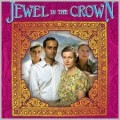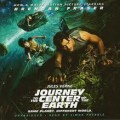Brain Packing
Preparing children for trips with film
Preparing for a trip always reminds me a little of studying for finals. As the departure date nears, I feel an undergraduate’s anxious urgency. From our very first trip, even before we were married, my husband and I have routinely packed our brains as compulsively as other people pack their bags. Months of reading for a two-week trip is never enough. Boarding the plane, we feel guilty regret for everything on the syllabus we didn’t manage to squeeze in. The truth is, we are as hooked on the bookish preparations as we are on the trips.
So, when we had children and decided at long last to take the two along, we were determined to find a comparable program for the whole family. Since children’s books rarely intersected with our itineraries, we turned to movies, approaching the selection with the usual dogged rigor. Some of our friends were dubious. They argued that there was something to be said for blissful ignorance; that travel was an experience that could be enjoyed straight up; that children might be more open to learning about a place after they had visited it than before. We were undeterred. 
We inaugurated our plan in preparation for a wilderness pack expedition in Montana, when the children were nine and ten. Beginning with fourteen of John Wayne’s cowboy movies, we watched him age, from 30 to 67. We saw his character evolve, from the simple gun-toting hero of his early films, when the West was young and untamed, to the paunchy anachronistic gunman in the older, more civilized West, where conflicts were resolved without bloodshed. In The Shootist, his last film, the opening credits appear over a collage of snippets from his previous westerns, so we got to see Wayne’s aging replayed at a stunning clip. Other classic cowboy films made it onto the list, too, from Destry Rides Again to The Treasure of the Sierra Madre. My husband and I were enthralled with the obsessive completeness of the experience. Our children, rather less enthusiastic, didn’t complain too much. They might not know about Lewis and Clark or America’s “manifest destiny” but at least, we told ourselves, the layered meaning of long days in the saddle, a sense of the rugged individualists who’d passed this way before, would not be lost on them.
The trip was a success. The kids were effusive about the camping and the neoprene, carbo-laden food. They spent long hours playing cat’s cradle and other string games. Whether their experience of the West was colored by our cinematic introduction was a matter for conjecture. On that subject, they were mute.
Organizing a film series for our next trip, to Belize, posed much more of a challenge. Authenticity was out of the question; even relevancy was a stretch. Only one or two nature films on the rain forest related directly to what we’d be seeing, so we settled for creating a loose, expressionistic context. I found some ‘50’s films set in corrupt, banana republics, but Woody Allen’s Bananas, with our hero embroiled in a South American revolution, was the most edifying. Out of sheer desperation we saw The Old Man and the Sea (for deep sea fishing); Mosquito Coast, a terrifying, horror-film version of Swiss Family Robinson; and—most farfetched of all—African Queen (for the challenge of the tropics). The kids participated with only minor griping, but what they made of the films was unclear. I suppose we were lucky they weren’t complete jungle-phobes by the time we left.
As it turned out, they enjoyed Belize a lot. Loads of frogs. Neat caves.
When we planned a trip to France, I couldn’t wait to start my research. With all of French cinema to choose from I thought I could easily make up for the previous film series. In fact, it was an embarrassment of riches, although, eliminating those with subtitles or explicit sex brought the number down dramatically. Since we were going to the Dordogne, a center of prehistoric art, we started with Clan of the Cave Bear. Fast-forwarding to medieval France, we saw The Hunchback of Notre Dame, 3…, 4…, and 5 Musketeers, and then The Scarlet Pimpernel and A Tale of Two Cities. I was forced to omit Napoleon entirely: Abel Gance’s film was too artful for our audience and Orson Welles’ version too dull. From the French Revolution we leapt right to the twentieth century. Gigi strained our kids’ limit for mushy love stuff; Umbrellas of Cherbourg made them retch. As our kids HATED art, we only watched (for all the French Impressionists) Moulin Rouge, with Jose Ferrer looking really kinky as Lautrec, whom he played kneeling in his shoes. An American in Paris, with Gene Kelly singing and dancing about the trials of being an aspiring artist, put the two to sleep. We finished with Mon Oncle, essentially a silent film, and Zazie dans le Metro, which might as well be.
Our tournée cinématique was a distinct compromise. My husband and I weren’t thrilled with our coverage of French history and culture, but we felt the kids were better prepared than if they’d only read Eloise in Paris and some Asterix comic books. The children were less than delighted. They wondered out loud, in fact, if what we’d put them through qualified as child abuse. The trip, however, was great. The kids loved the food, demonstrating that their taste had improved since the pack trip, and they played a lot of boule. “Are you thinking of Quasimodo?” I called out hopefully as we climbed the tower of Notre Dame. “Get a life, Mom!” reverberated back down the ancient stone steps.
Undaunted, I planned the next film festival for a trip to Kenya, with customary zeal. The pickings were slimmer, but the amount of recorded history was also less daunting. There were good movies on the exploration and colonization of Africa: Mountains of the Moon about Burton and Speke; Stanley and Livingstone with Spencer Tracy delivering the famous “I presume” line; and Khartoum with Sir Laurence playing the Mahdi in blackface. We saw all three Zulu movies although we were going nowhere near Zulu country, and Gorillas in the Mist, although we would see no gorillas. We explored the Tarzan myth first in an old Johnny Weissmuller film and then in Greystoke. We should have stopped with Out of Africa and Flame Trees of Theika but we still had a few days left. Born Free, which I’d remembered as touching, seemed ridiculously outdated with Elsa, the lioness, being nurtured by a saccharine couple in bell-bottomed safari suits. Both children mocked me mercilessly for it. Hatari!, in which John Wayne plays a great white hunter, may have been the nadir of his career. The Snows of Kilimanjaro enlightened us about Africa about as much as The Old Man of the Sea had about Belize.
Still, the kids loved Africa. Fun camping. Great animals. Cool spears.
Despite continued grumbling in the ranks, the following year I avidly researched for a trip to Israel. So much history and such terrible movies. We tried to watch a few Bible films, but at thirteen and fourteen the kids were too sophisticated for them. By the time Eve was made from Adam’s rib, twenty minutes into The Bible: In the Beginning…, they were on the floor, laughing convulsively and gasping for air. I personally could not face Richard Gere as David, Victor Mature as Samson, or Jeffrey Hunter as Jesus, and, luckily, both kids had seen The Ten Commandments when they were younger. Monty Python’s Life of Brian turned out to be the most tasteful of the Good Book films and at least it intended to be funny. King Solomon’s Mines and Raiders of the Lost Ark (for archeology) were similarly illuminating. Neither Topol in Fiddler on the Roof nor Barbra in Yentl (for the Diaspora) were headed for Israel, but their sentiments were aimed in the right direction. Exodus (for the formation of the Jewish State) was serious and convincing until the final scene with Eva Marie-Saint transformed into a Haganah freedom fighter. For the Arab-Israeli conflict I found Wedding in Galilee, described on the box as a “richly detailed allegory of marriage, tradition, and national culture.” My movie guide had given it five stars, its top rating. It was the straw that broke the camel’s back. “That’s it!” the kids screamed. “We’ve had it with your IDIOTIC movies!”
I was astonished. What easier or more pleasant way could there be to acquire knowledge, or at least, context? It wasn’t as though we were asking them to read anything. Did they want to go on a trip uninformed? Yes. They did.
In the face of the previous year’s uprising, when we traveled to India, I limited the program to the bare minimum: Passage to India, Gandhi and as many of the fourteen episodes of Jewel in the Crown as we had time for, its central episodes being rape and torture, perfect fare for teenagers.
They would have none of it. Zero. They were not open to bribery. They refused to watch even City of Joy, a movie about everything in India we would least like them to know, starring Patrick Swayze, a teenage heartthrob. If I proposed it, it was out of the question. We should be happy they were willing to accompany us on the trip.
So, in India, our children traveled light. Tabula rasa. They experienced the country directly, freshly, blissfully unencumbered by anyone else’s perspective or imagination. They had a good time, they said.
It was clear I had to lay low and suspend the Family Film Festival for a while. The following year, I actually considered a trip to Hawaii, with the idea that I would at least feel no regret about the kids missing Beach Blanket Bingo or Gidget goes Hawaiian. Even the epic Hawaii, with Julie Andrews and Max Von Sydow as impassioned missionaries, would not be much of a loss. And they’d already seen Journey to the Center of the Earth (for volcanoes).
 In the end, of course, the film festival was left behind with the waterslides and birthday parties and visits to Ben and Jerry’s factory. Once our kids had driving licenses, they were off. For a while, I had to hide their baby pictures, it made me so sad.
In the end, of course, the film festival was left behind with the waterslides and birthday parties and visits to Ben and Jerry’s factory. Once our kids had driving licenses, they were off. For a while, I had to hide their baby pictures, it made me so sad.
Then, one day it came to me: now I was free to plan the film series of my dreams! No more struggling to please our two unpleasables. Netflix lists 189 films under the category, “China,” and at least 22 of them are quite good.
 site feed
site feed
-
A list of films for travel: by country
As I can, I will post the movie lists I've made for the many trips I've taken without children, aiming for "nothing but the best" ...
-
And with films themselves: To prepare or not to prepare?
Contrary to my approach to travel, I try never to read anything before seeing a movie. I feel reviews and promotional articles may contaminate the ...
-
Lists of great films around other topics
Great films about Art: In the Realm of the Unreal: a fabulous film about the outsider artist and janitor Henry Darger, ...



